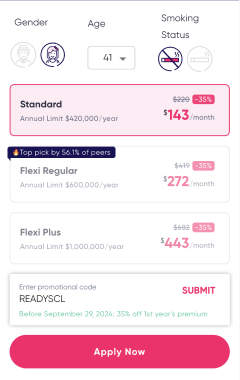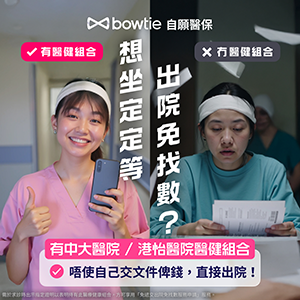Things to know about Urine Analysis
A urinalysis involves checking the appearance, concentration and content of urine. Abnormal urinalysis results may point to a disease or illness. Your urine sample is evaluated in three ways: visual exam, dipstick test and microscopic exam.
Visual exam
A lab technician examines the urine’s appearance. Urine is typically clear. Cloudiness or an unusual odor may indicate a problem, such as an infection.
Blood in the urine may make it look red or brown. Urine color can be influenced by what you’ve just eaten. For example, beets or rhubarb may add a red tint to your urine.
Dipstick test
A dipstick — a thin, plastic stick with strips of chemicals on it — is placed in the urine to detect abnormalities. The chemical strips change color if certain substances(like blood, sugar, ketones, proteins and even acidity) are present or if their levels are above normal.
Microscopic exam
During this exam, several drops of urine are viewed with a microscope. If any of the following are observed in above-average levels, additional testing may be necessary:
- White blood cells (leukocytes) may be a sign of an infection.
- Red blood cells (erythrocytes) may be a sign of kidney disease, a blood disorder or another underlying medical condition, such as bladder cancer.
- Bacteria or yeasts may indicate an infection.
- Casts — tube-shaped proteins — may form as a result of kidney disorders.
- Crystals that form from chemicals in urine may be a sign of kidney stones.
Normal ranges in an Urine Analysis
| Urinanalysis Parameter | Normal Values |
| Aspect | Clear |
| Colour | Pale yellow-yellow |
| Odour | Atypical |
| Reaction (pH) | Acid (5,5-6) |
| Acid | No |
| Specific gravity | 1010-1030 |
| Leukocyte esterase | Negative |
| Nitrites | Negative |
| Protein | Negative or traces (< 30 mg/dl) |
| Glucose | Negative |
| Ketones | Negative |
| Haemoglobin | Negative |
| Bilirubin | Negative |
| Urobilinogen | Negative or traces (< 0,2 EU/dl ή <1 mg/dl) |
| Epithelial cells | 0-4 p.v.f. |
| Erythrocytes | 0-4 p.v.f. |
| Pus cells | 0-4 p.v.f. |
| Casts | 0-2 hyaline |
| Germs- fungi | None |
| Crystals | No abnormal crystals present |
| Amorphous salts | A few |
| Mucus | No, some |
| Lipid droplets | None |
What causes abnormal Urine Analysis reports?
The causes vary depending on the variations in testing parameters. Urine can be a variety of colors, most often shades of yellow, from very pale or colorless to very dark or amber. Unusual or abnormal urine colors can be the result of a disease process, several medications (e.g., multivitamins can turn urine bright yellow), or the result of eating certain foods. For example, some people can have red-colored urine after eating beets; the color is from the natural pigment of beets and is not a cause for worry. However, red-colored urine can also occur when blood is present in the urine and can be an indicator of disease or damage to some part of the urinary system. Another example is yellow-brown or greenish-brown urine that may be a sign of bilirubin in the urine.
Urine clarity refers to how clear the urine is. Usually, labs report the clarity of the urine using one of the following terms: clear, slightly cloudy, cloudy, or turbid. “Normal” urine can be clear or cloudy. Substances that cause cloudiness but that are not considered unhealthy include mucus, sperm and prostate fluid, cells from the skin, normal urine crystals, and contaminants such as body lotions and powders. Other substances that can make urine cloudy, like red blood cells, white blood cells, or bacteria, indicate a condition that requires attention.
In certain liver diseases, such as biliary obstruction or hepatitis, excess bilirubin can build up in the blood and is eliminated in urine. The presence of bilirubin in urine is an early indicator of liver disease and can occur before clinical symptoms such as jaundice develop. Positive test results may indicate liver diseases such as viral hepatitis, cirrhosis, liver damage due to drugs or toxic substances, or conditions associated with increased RBC destruction (haemolytic anemia). When urine urobilinogen is low or absent in a person with urine bilirubin and/or signs of liver dysfunction, it can indicate the presence of liver or bile obstruction.
Protein in the urine may be a sign of kidney disease. Small amounts of albumin may be found in the urine when kidney dysfunction begins to develop. Glucose in the urine indicates diabetes. In a person who has diabetes, ketones in urine may also be an early indication of insufficient insulin. When this test is positive and/or the WBC count in urine is high, it may indicate that there is inflammation in the urinary tract or kidneys. The most common cause for WBCs in urine (leukocyturia) is a bacterial urinary tract infection (UTI), such as a bladder or kidney infection.
Certain risks associated with abnormal Urine Analysis reports
- Haematuria
It may be an indicator of the potential for a medical emergency from renal colic or from recurrence of urinary tract infection. May identify longer term risk from the development of a urinary tract cancer. Haematuria can be present in urinary tract infection, with stones, from prostatic disease or from cancer of the urinary tract. Blood may also be present in a urine sample from menstruation or from minor lower tract trauma. - Proteinuria
Proteinuria may be an indicator of kidney pathology. In this case, there is a risk of progressive kidney failure.It may also indicate that the kidney has less than the normal ability to deal with dehydration or fluid overload. The ratio of protein to creatinine is an indicator of whether there is a normal pattern of urinary excretion from the kidney. The presence of semen or vaginal fluids and urinary tract infection can also lead to the detection of protein in the urine. - Glycosuria
It is a common presenting feature of diabetes. The presence of glycosuria in a person with diabetes indicates that the control of their blood glucose levels is poor and their treatment needs reviewing.
Steps to improve Bladder Health
While you can’t control everything that affects bladder health, there are some steps you can take to improve bladder health. Follow these tips to keep your bladder healthy:
- Drink enough fluids, especially water. Most healthy people should try to drink six to eight, 8-ounce glasses of fluid each day. Water is the best fluid for bladder health. At least half of fluid intake should be water. Some people need to drink less water because of certain conditions, such as kidney failure or heart disease. Ask your healthcare provider how much fluid is healthy for you.
- Limit alcohol and caffeine. Cutting down on alcohol and caffeinated foods and drinks—such as coffee, tea, chocolate, and most sodas—may help.
- Quit smoking. If you smoke, take steps to quit . If you don’t smoke, don’t start.
- Avoid constipation. Eating plenty of high-fibre foods (like whole grains, vegetables, and fruits), drinking enough water, and being physically active can help prevent constipation.
- Keep a healthy weight. Making healthy food choices and being physically active can help you keep a healthy weight.
- Exercise regularly. Physical activity can help prevent bladder problems, as well as constipation. It can also help you keep a healthy weight.
- Do pelvic floor muscle exercises. Pelvic floor exercises, also known as Kegel exercises, help hold urine in the bladder. Daily exercises can strengthen these muscles, which can help keep urine from leaking when you sneeze, cough, lift, laugh, or have a sudden urge to urinate.
- Use the bathroom often and when needed. Try to urinate at least every 3 to 4 hours. Holding urine in your bladder for too long can weaken your bladder muscles and make a bladder infection more likely.
- Take enough time to fully empty the bladder when urinating. Rushing when you urinate may not allow you to fully empty the bladder. If urine stays in the bladder too long, it can make a bladder infection more likely.
- Be in a relaxed position while urinating. Relaxing the muscles around the bladder will make it easier to empty the bladder. For women, hovering over the toilet seat may make it hard to relax, so it is best to sit on the toilet seat.
- Wipe from front to back after using the toilet. Women should wipe from front to back to keep bacteria from getting into the urethra. This step is most important after a bowel movement.
- Urinate after sex. Both women and men should urinate shortly after sex to flush away bacteria that may have entered the urethra during sex.
- Wear cotton underwear and loose-fitting clothes. Wearing loose, cotton clothing will allow air to keep the area around the urethra dry. Tight-fitting jeans and nylon underwear can trap moisture and help bacteria grow.







